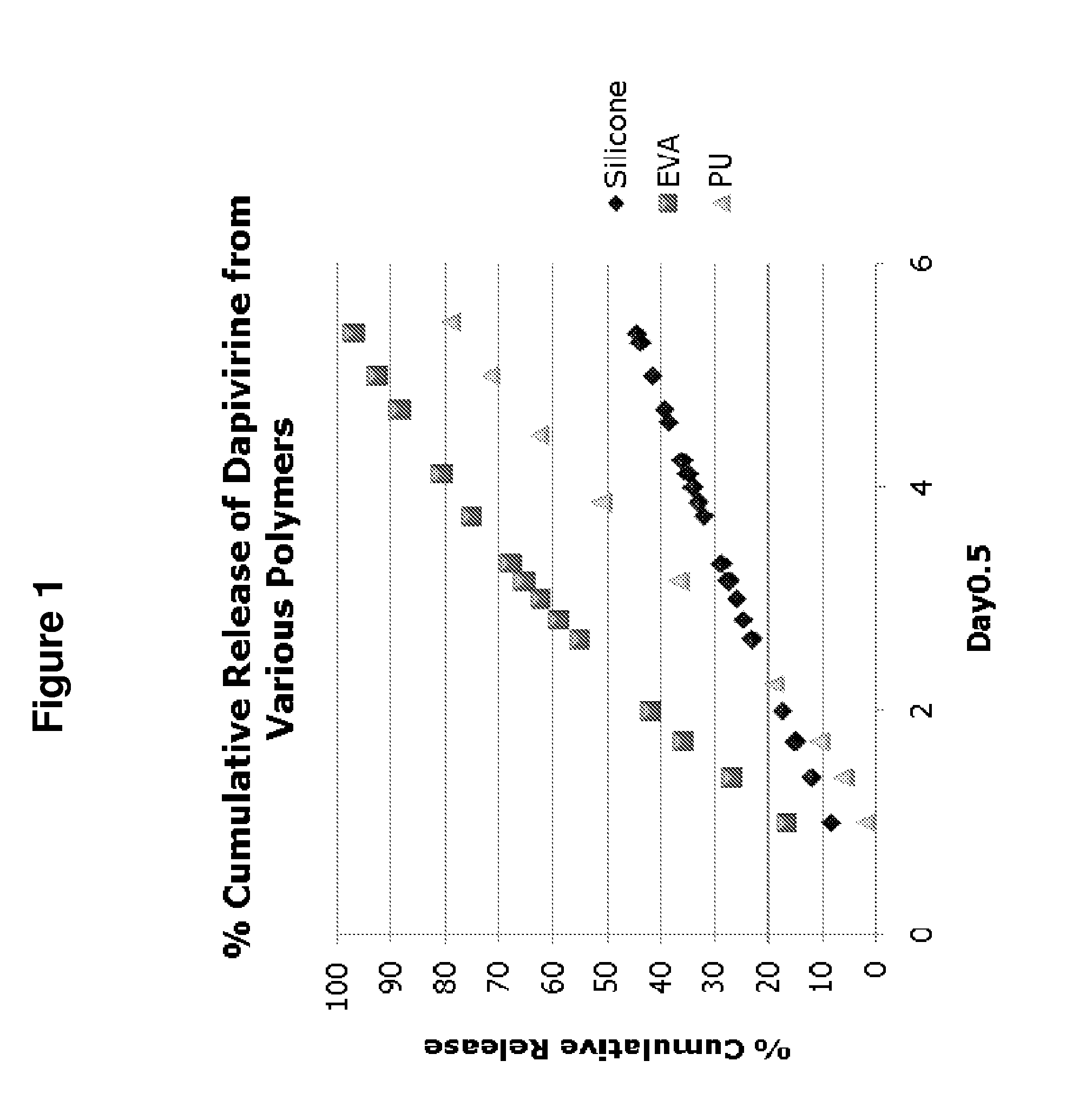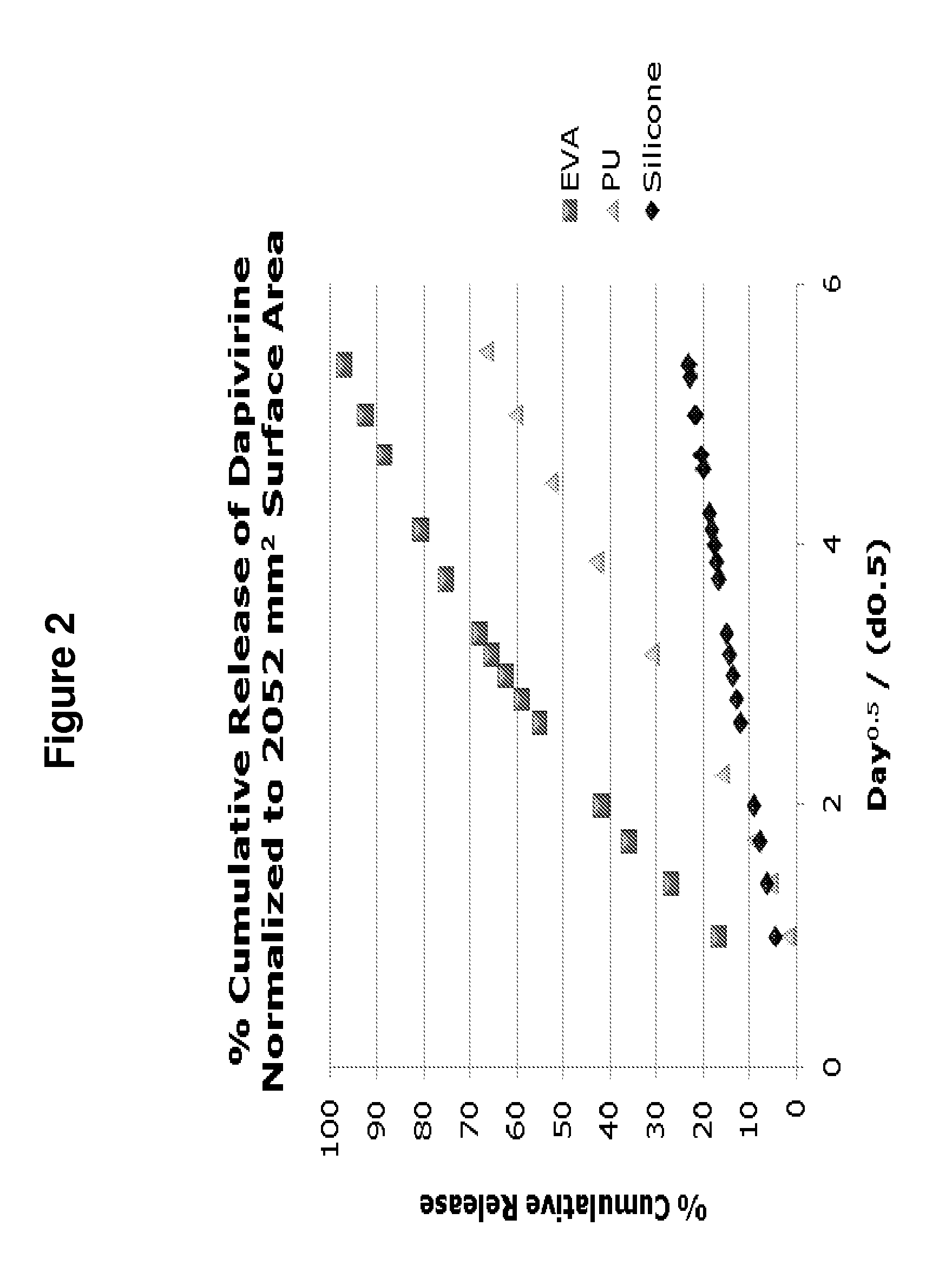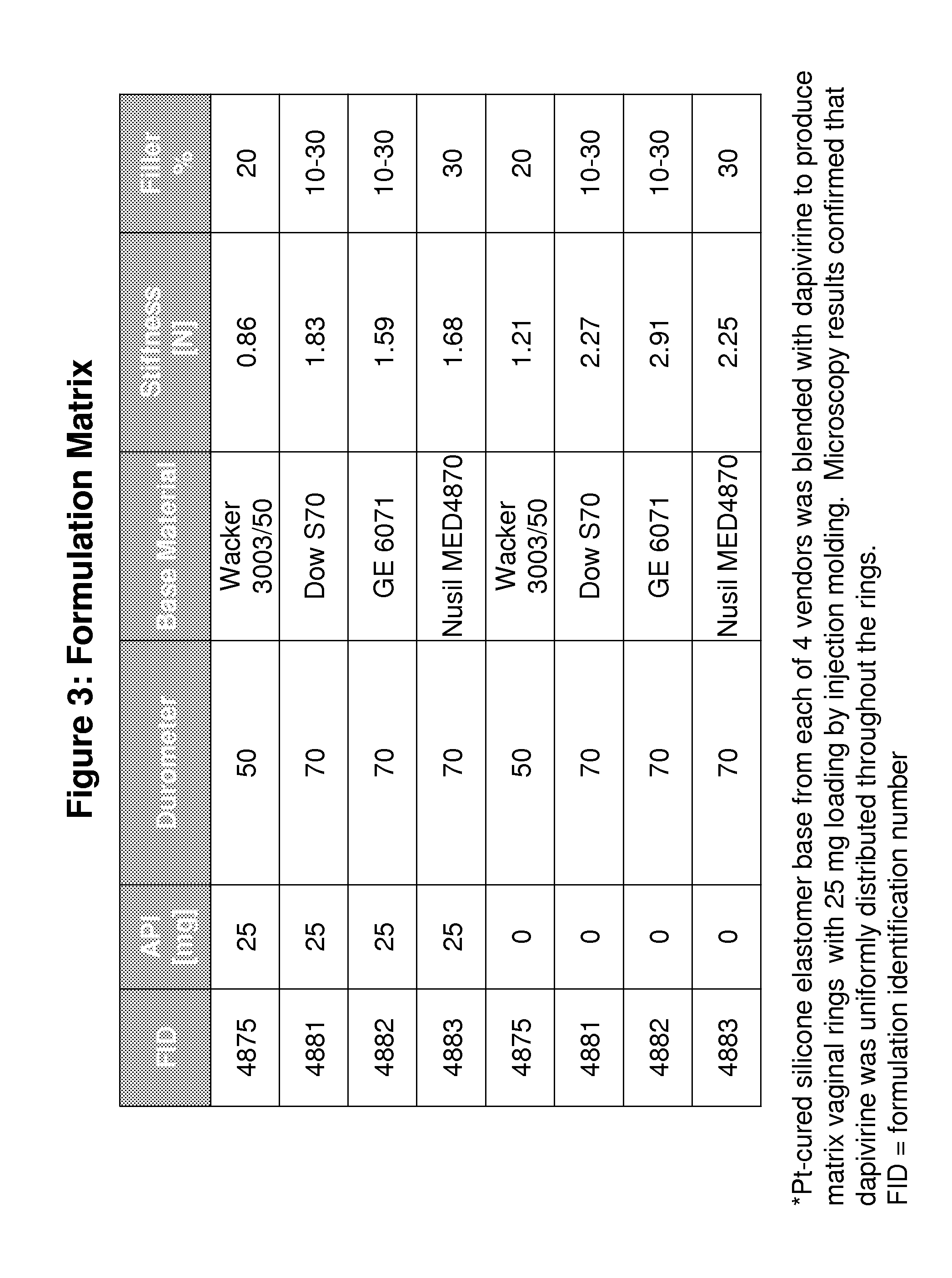Platinum-catalyzed intravaginal rings
a technology of platinum-catalyzed rings and intravaginal ring, which is applied in the direction of biocide, contraceptive devices, drug compositions, etc., can solve the problems of crystallization of drug substance on the surface of the rings, and achieve the effects of low loading dose, easy and less expensive manufacturing, and high and steady release rates
- Summary
- Abstract
- Description
- Claims
- Application Information
AI Technical Summary
Benefits of technology
Problems solved by technology
Method used
Image
Examples
example 1
Dapivirine Matrix Vaginal Ring
[0162]Stability issues were addressed by the development of the instant dapivirine ring. Specifically, a silicone curing reaction used a different catalyst for the cross-linking reaction. The instant invention provides rings with a dispersion of 25 mg dapivirine in a silicone elastomer matrix (matrix ring); however, platinum (in the form of a platinum-siloxane complex) is used as the catalyst for the silicone crosslinking reaction. This process is readily applied in scale-up production and does not involve a propanol by-product produced during curing.
[0163]The dapivirine matrix vaginal ring is an off-white flexible ring containing 25 mg of drug substance dispersed in a silicone matrix (see Table 1 for composition of the ring). The dimensions of the ring are 56 mm and 7.7 mm outer diameter and cross-sectional diameter, respectively. The vaginal ring is designed to provide sustained release.
TABLE 1Composition of an 25 mg Dapivirine Intravaginal RingAmount...
example 2
Release Characteristics of Dapivirine from Vaginal Rings Consisting of Ethylene Vinyl Acetate, Silicone or Polyurethane Polymers
[0164]To date, most microbicide candidates in clinical evaluation have been formulated as single-use, semi-solid gels designed to be administered to the vagina immediately before each act of intercourse (Garg et al., Antivir. Chem. Chemother., 2009; 19(4):143-450.) However, a clear rationale exists for the development of controlled-release microbicide formulations, potentially offering 1) long-term continuous protection against sexually-transmitted HIV, 2) increased acceptability, and 3) improved user adherence which should translate into greater product effectiveness.
[0165]Dapivirine possesses specific hydrophilic / lipophilic characteristics, as evidenced by its relatively large and positive log P value, which are likely to influence its release characteristics from polymeric ring devices (Table 2). Accordingly, this example compares the in vitro drug relea...
example 3
Comparative Study of Dissolution Profiles of Microbicide Ring Products Prepared from Different Silicone Elastomer Sources
[0173]Vaginal rings are sustained release delivery formulations of the drug substance in polymer bases. Different vendors produce silicone elastomers of different formulations with varying crosslinker and filler contents. This example compares the in vitro release characteristics of the matrix-type microbicide rings made from silicone materials marketed by four vendors.
[0174]The drug product device was prepared by blending the silicone elastomer base with Dapivirine, a potent antiviral compound against HIV-1. Each ring contained 25 mg of the drug substance dispersed in a platinum cured silicone matrix (FIG. 3). Dissolution testing was performed on silicone matrix rings in 1:1 Isopropyl alcohol (IPA):Water dissolution medium. Each ring was placed in a borosilicate bottle with 100 mL of the de-aerated dissolution medium and then incubated in orbital shakers at 37° C...
PUM
 Login to View More
Login to View More Abstract
Description
Claims
Application Information
 Login to View More
Login to View More - R&D
- Intellectual Property
- Life Sciences
- Materials
- Tech Scout
- Unparalleled Data Quality
- Higher Quality Content
- 60% Fewer Hallucinations
Browse by: Latest US Patents, China's latest patents, Technical Efficacy Thesaurus, Application Domain, Technology Topic, Popular Technical Reports.
© 2025 PatSnap. All rights reserved.Legal|Privacy policy|Modern Slavery Act Transparency Statement|Sitemap|About US| Contact US: help@patsnap.com



